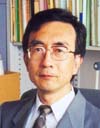 日本語 / English
日本語 / English
Member of Sakaki Group (2011.4-)
Prof. Dr. Shigeyoshi Sakaki

Professor, Kyoto University
Fukui Institute for Fundamental Chemistry
Research Leader of
Fukui Institute for Fundamental Chemistry
Dr. of Engineering, Kyoto University, 1974
E-mail: sakaki.shigeyoshi.47e"at "st.kyoto-u.ac.jp (please change "at " to @)
Research Careers and Experience
1975: Assistant professor of Kumamoto University.
Development of new semi-empirical MO method which could be applied to transition metal complexes.
Theoretical studies of bonding nature and spin distribution of open-shell transition metal complexes.
Theoretical studies of nucleophilic attacks to organic moieties coordinating with transition metal complexes.
In this period, I successfully made new development in semi-empirical MO method because Japanese theoreticians could not perform ab initio MO calculations of even medium-size molecules due to the poor situation of computer. Based on semi-empirical MO method, I succeeded in presenting correct knowledge of nucleophilic attack to organic moieties coordinating transition metal complexes which is one of important elementary steps in catalytic reactions.
1982: Associate professor of Kumamoto University
Ab initio MO studies of geometries, bonding nature, and electronic structures of transition metal complexes of carbon dioxide, dinitrogen molecule, and similar compounds.
Ab initio MO studies of CO and ethylene insertion reactions into M-H and M-silyl bonds:
In this period, Japanese theoreticians could start to perform ab initio MO calculations but ab initio MO calculations of transition metal complexes were still difficult. I theoretically investigated transition metal complexes of CO2 and N2 which were newly synthesized in this period, because their bonding natures were not clearly elucidated. Organometallic reactions were still difficult targets of ab initio MO calculations. But, we succeeded in theoretically investigating CO and ethylene insertion reactions which are key elementary steps of organometgallic and catalytic reactions. All these are pioneering work.
1989: Full professor of Kumamoto University
(1999-2000: Visiting professor of Institute for Molecular Science (IMS))
Theoretical studies of transition-metal-catalyzed hydrosilylation and disilylation of alkene.
Theoretical studies of s-bond activation through oxidative addition reaction to transition metal complexes.
We succeeded in theoretically investigating full catalytic cycles of several important catalytic reactions and s-bond activation which is key elementary steps in catalytic reactions.
2002: Full professor of Kyoto University
Theoretical studies of transition metal complexes including Si and Ge chemical species.
Theoretical studies of heterolytic s-bond activation: reaction course and key orbital interaction
Theoretical studies of dinuclear transition metal complexes with CAS-PT2 method.
Theoretical studies of palladium-catalyzed cross-coupling reaction of boron and silicon chemical species and iridium-catalyzed direct cross-coupling reaction of boron chemical spesies.
Development of frontier-orbital-consistend effective potential and its application to CCSD(T) calcualtion of large transition metal complexes. Approach to chemical accuracy in large transition metal complexes.
(2004-2009: Director of Fukui Institute for Fundamental Chemistry, Kyoto Univesity)
From these theoretical studies, we present new concept of heterolytic s-bond activation. Also, we theoretically elucidated reaction mechanism of catalytic reactions and catalytic roles of transition metal centerPapers: Please see this page.
Conference: Please see this page.